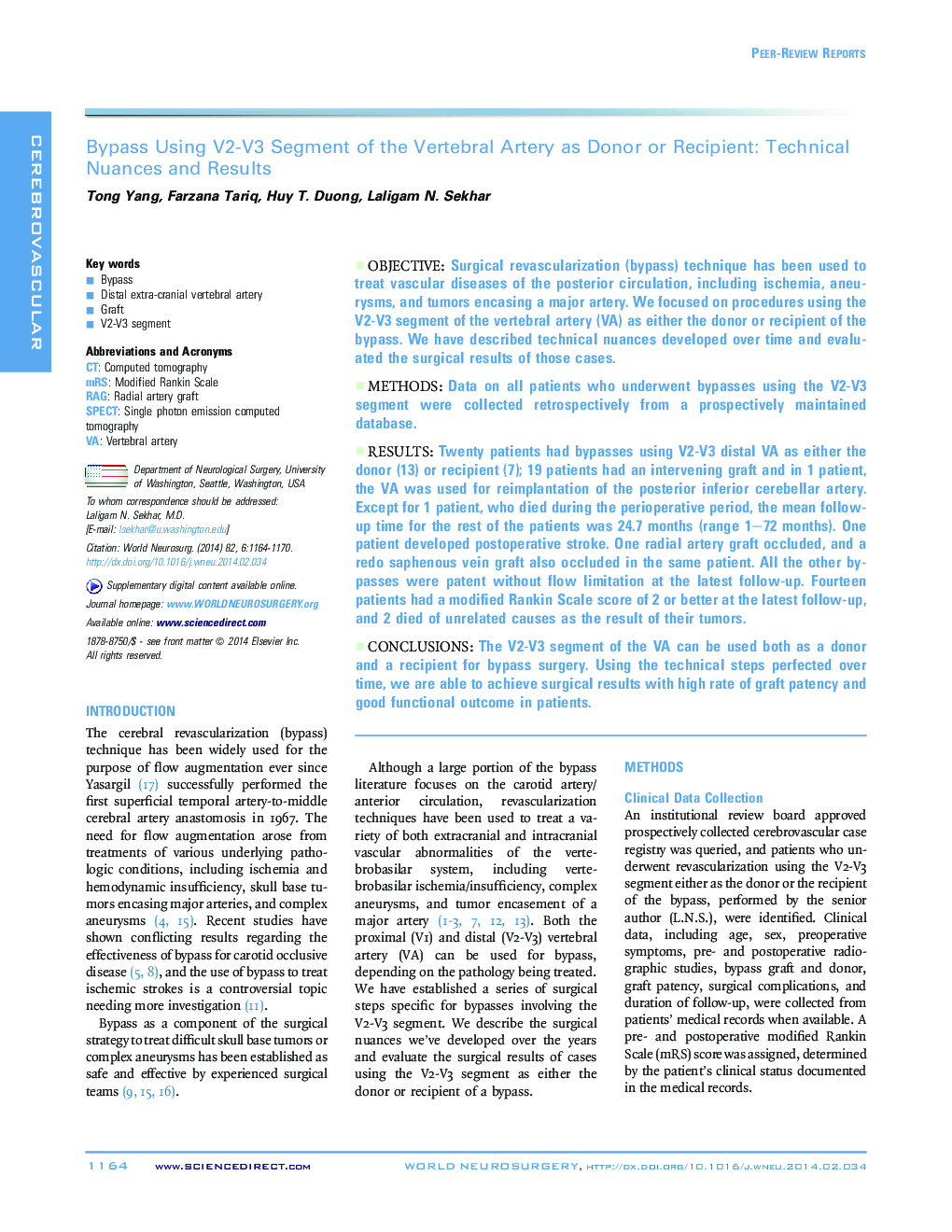| Article ID | Journal | Published Year | Pages | File Type |
|---|---|---|---|---|
| 6045629 | World Neurosurgery | 2014 | 7 Pages |
ObjectiveSurgical revascularization (bypass) technique has been used to treat vascular diseases of the posterior circulation, including ischemia, aneurysms, and tumors encasing a major artery. We focused on procedures using the V2-V3 segment of the vertebral artery (VA) as either the donor or recipient of the bypass. We have described technical nuances developed over time and evaluated the surgical results of those cases.MethodsData on all patients who underwent bypasses using the V2-V3 segment were collected retrospectively from a prospectively maintained database.ResultsTwenty patients had bypasses using V2-V3 distal VA as either the donor (13) or recipient (7); 19 patients had an intervening graft and in 1 patient, the VA was used for reimplantation of the posterior inferior cerebellar artery. Except for 1 patient, who died during the perioperative period, the mean follow-up time for the rest of the patients was 24.7 months (range 1-72 months). One patient developed postoperative stroke. One radial artery graft occluded, and a redo saphenous vein graft also occluded in the same patient. All the other bypasses were patent without flow limitation at the latest follow-up. Fourteen patients had a modified Rankin Scale score of 2 or better at the latest follow-up, and 2 died of unrelated causes as the result of their tumors.ConclusionsThe V2-V3 segment of the VA can be used both as a donor and a recipient for bypass surgery. Using the technical steps perfected over time, we are able to achieve surgical results with high rate of graft patency and good functional outcome in patients.
